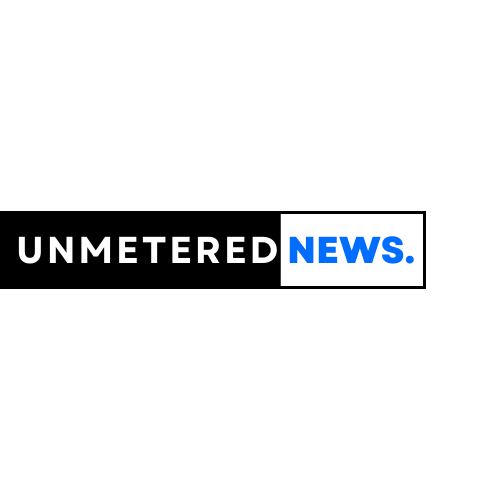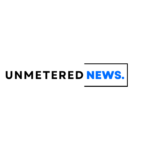- Home
- Advertise With us
- World News
- Tech
- Entertainment
- Travels & Tours
- Contact US
- About us
- Privacy Policy
Top Insights
Rising Lion: Escalation, Objectives, and the Logic of Targeting

Operation Rising Lion represents a significant moment in the ongoing confrontation between Israel and Iran. The consequences wrought by Iran’s persistent destabilization of the region through proxy groups for years and insistence on advancing their nuclear program – despite repeated warnings from the United States and Israel – are already severe.
Although it is early, there are three elements of Rising Lion to pay close attention to: (1) how escalation progresses and where it may lead, (2) what Israel’s true strategic objectives are given the means it has already committed and the risk it appears willing to assume, and (3) how the logic of targeting can shape an adversary’s decision-making. Each of these dynamics may influence not only the outcome of this conflagration but the possibility for a better peace when the fighting stops.
Escalation Ladders and Thresholds
The fundamental question of how far this conflict could escalate may be a function of degraded Iranian capabilities and limited means available to Tehran. Iran’s ability to respond convincingly and in a way which preserves the legitimacy of the Ayatollahs is likely to be materially constrained. Years of sanctions, the degradation of military infrastructure at the hands of the Israeli Defense Forces (IDF) and Mossad, and the weakened state of Tehran’s proxy network has done much to weaken Iranian strategy. However, a cornered Iran with limited options may escalate asymmetrically or worse. Tehran might feel forced to make unpredictable, drastic actions that are unforeseen by Israel and the United States.
This begs the question of off-ramps for both sides – and the degree to which they are already narrowing based on actions already taken. For Israel, an off-ramp could follow decisive operational success – such as the destruction of key Iranian nuclear infrastructure. A decisive military achievement paired with U.S. diplomatic assurances to maintain pressure on Iran through non-kinetic approaches might provide the opportunity to off-ramp and de-escalate the conflict. Alternatively, for Iran, a plausible off-ramp may include symbolic retaliation which seeks to preserve what little credibility Iranian leadership has left followed by a return to the negotiating table with the United States. However, in the absence of meaningful options, Iran’s leadership may perceive that de-escalation means capitulation – which further reinforces the increased risk that Iran may lash out in unpredictable ways.
Iran retains several tools: militias in Iraq, missile arsenals, cyber capabilities, and a demonstrated willingness to target U.S. interests or forces in the region in the past. A key question is whether Iran will consider striking U.S. forces this time. The logic behind this move could be to impose costs, signal defiance and resolve in the face of overwhelming odds and widen the crisis in order to pressure Washington to restrain Israel.
A strike on U.S. forces or assets may not be designed to restore deterrence but to compel external intervention before Iran suffers an irrecoverable strategic loss. This dynamic introduces a perilous degree of unpredictability into the crisis. Iran’s willingness to target civilians also introduces a dangerous element into escalatory dynamics. Tehran’s decision to attack population centers – predictable as it may be in response to Israel’s audacious attack – reveals a strategy aimed at psychological destabilization which is unlikely to generate strategic affects due to the Israeli populace’s hardened disposition. However, this tactic will likely limit options and reduce the utility of potential off-ramps for Israeli leadership.
Ultimately, the Israeli strategy behind Rising Lion rests on two central assumptions: (1) the threat of an Iranian nuclear sprint is real and that Iran’s current leadership, if unchecked, will continue its current course and (2) Iran possesses a plausible degree of intent to use a nuclear weapon against Israel once it obtains the means to do so. But in carrying out their operational plans and developing escalatory options, both Israel and the United States should remain alert to the possibility that, under extreme duress with few viable options remaining, Iran may escalate outside of expected bounds.
Strategic Objectives: Destruction of the Nuclear Program or Regime Change?
Publicly, Israel has framed the operation primarily as a defensive campaign to destroy or significantly degrade Iran’s nuclear program. However, the ends chosen at the outset of any conflict often change, and drastic operational success and failure can generate its own momentum which affects strategic and political objectives. The United States learned this in 2003 in Iraq and in 2005-2006 as a blistering insurgency took hold of the country.
There is risk that Rising Lion could evolve in the same way. If the campaign achieves significant success – as some argue that it already has – then Israel may face pressure, both internally from their populace or externally by countries that have an interest in seeing the Ayatollahs toppled, to expand its objectives beyond degradation of the nuclear program to regime change. For many in Israel’s security establishment, Iran’s regime is not only an existential nuclear threat – it is the architect of a years-long campaign of violence against the Israeli state through proxy groups. Hezbollah’s missile threat against Israel’s north, Hamas’ brutality on October 7th 2023, and other countless acts of terrorism funded by Iran have likely oriented the will of the Israeli populace toward a posture of retribution rather than de-escalation, reducing the appetite for restraint. In other words, Israeli leadership wields an unquantifiable but crucial weapon: a preponderance of political will derived from broad public consensus on the threat posed by Iran. Consequently, that grants Israeli decision-makers increased flexibility in the conduct and escalatory options of the campaign.
The technical feasibility of achieving the strategic objective of destroying the Iranian nuclear program through military means also shapes how objectives may evolve. If the IDF determines that Israeli military power alone is insufficient to destroy Iran’s nuclear program – due to over-optimism about its own abilities, Iranian resilience, or another unforeseen reason – then regime change may emerge as the only remaining pathway to a day-after scenario in which the nuclear threat no longer exists. The logic behind this decision could rest on the assumption that a post-Ayatollah Iranian government, informed by the lessons and consequences of the ongoing conflict, will reassess if the pursuit of nuclear weapons is in Iranian interest. Therefore, this assumption rests upon something far more flimsy – hope. That is, this assumption is guided by the hope that this hypothetical governing body will opt to abandon the program altogether as a way to reintegrate with the region and seek peace. Additionally, the assumption that the new governing body would not seek to re-establish a political-religious regime like that of the Ayatollah’s.
But a strategy oriented towards regime change raises questions about the day after. Who will govern Iran? Can elements of a fragmented Islamic Revolutionary Guard Corps (IRGC) be controlled and re-molded into a bureaucracy to maintain order in a post-Ayatollah Iran? Who ensures stability in the Persian Gulf if the regime collapses?
The U.S. experience in Iraq remains instructive. Removing Saddam Hussein from power removed a threat, but it also dismantled the Iraqi state and unleashed a decade of instability, revealing the incredible challenges associated with “nation-building.” Democracy does not spring forth from the ground once an autocratic regime falls. It requires domestic buy-in, institutions, legitimacy, and external support – all which are currently lacking in Iran. To this point, regime change has not been overtly articulated by Israel – although the signs are already pointing in that direction. However, if the regime’s overthrow becomes an inherent outcome of Rising Lion, a dangerous uncertainty may be the result. The U.S. may be drawn into shaping a post-Ayatollah Iran even if it never anticipated or desired that outcome.
Ultimately, the question of who shapes “the day after” is critical. If Israel seeks to topple the Iranian regime and re-shape the regional order, it must anticipate the second- and third-order effects of regime collapse. Otherwise, the outcome of Rising Lion could produce more instability than previously anticipated.
Targeting is not Strategy – But it Can Cripple
Military power alone – and operational success – rarely delivers strategic success. With airpower serving as Israel’s primary tool so far, targeting is a central mechanism through which Israel seeks to transcend operations to achieve political objectives. When employed within a coherent framework, targeting can do more than destroy – it can paralyze.
Ideas about how to prosecute war and military doctrine are rooted in national contexts and the strategic culture of individual states. However, certain analytical frameworks can offer valuable insights across different scenarios. One such framework is John Warden’s Five Rings theory – a framework developed within the American military, and influential in shaping air campaign planning for Operation Desert Storm – a lens through which to examine Israel’s apparent targeting logic in Operation Rising Lion. This is not to suggest that Israeli strategic thinking is directly influenced by Warden’s model, nor to dismiss the existence of Israeli strategic concepts. Rather, despite widespread criticism of its real-world applicability, Warden’s model provides a useful, if simple, framework for analyzing the effects of targeting choices and inferring potential strategic objectives. It allows for a peek into Israel’s strategic calculus, understanding what they might be trying to achieve by looking at what they are hitting. Despite the model’s top-down perspective, it offers a structured way to understand how targeting decisions can be linked to broader strategic goals and provides a valuable starting point for analysis.
Warden’s Five Rings theory visualizes the adversary’s system is visualized as five concentric rings: (1) leadership, (2) essential systems – in this case, nuclear facilities – (3) infrastructure, (4) population, and (5) fielded military forces. The inner rings, particularly leadership and essential systems, are the most critical.
Israel – wittingly or not – appears to be implementing this logic on some level. Strikes on hardened facilities (Ring 2) have been paired with attacks on IRGC headquarters and command nodes (Ring 1), while air defense assets (Ring 5) have also been targeted. Notably, the fact that Israel has not directly targeted Iran’s senior leadership – the Ayatollahs – suggests an intent not to decapitate the regime, but to force it to recalculate. The initial objective – in addition to destruction or severe degradation of the nuclear program – may also be to induce paralysis. By degrading the regime’s capacity to operate coherently and maintain command and control, Israel is attempting to force Tehran into recalculating its ability to escalate further. Seeking to create cognitive and systemic disruption – paralyzing the regime – by denying it the ability to communicate, govern, or mobilize – can achieve strategic objectives without prolonged combat or stumbling into protracted war. Or so the theory goes.
Importantly, targeting strategies must remain adaptive. If Rising Lion remains focused on the nuclear program, attacks will prioritize Rings 2 and 3. But if strategic objectives shift toward regime destabilization, Rings 1 and 4 will take precedence—seeking to fracture elite cohesion and influence public perception through a combination of kinetic and non-kinetic methods. If the conflict becomes protracted or increasingly violent, the conventional wisdom associated with Israeli targeting norms may also shift. Israel has preserved the distinction between military and civilian targets thus far, focusing its air campaign on strategic infrastructure (Ring 3), leadership nodes (Ring 1), and nuclear facilities (Ring 2). However, if Iranian attacks cause mass casualty events in Israeli population centers, pressure on domestic political thresholds may push Israeli leadership to respond by shifting towards Ring 4. Although this possibility remains difficult to comprehend in the current moment, its emergence would mark a significant shift in Israel’s strategic logic and moral posture.
Yet targeting without strategy is dangerous. Over-targeting could produce unintended blowback, harden Iranian public resolve, or collapse governance structures needed to manage the chaos of the day-after scenario. As Rising Lion progresses at the operational level, the central challenge for Israel will be to employ a targeting logic which seeks to achieve political effects without unleashing consequences it cannot manage.
Conclusion
Operation Rising Lion is unfolding at a moment of profound strategic consequence. This analysis has highlighted three essential elements that will shape the outcome of the campaign and its broader implications. First, while Iran’s ability to escalate is constrained, the regime may respond in unpredictable ways – especially if it feels cornered. Second, Israel’s objectives may extend beyond destroying Iran’s nuclear program; overwhelming operational success or shifting political conditions brought on by that success could push its aims toward regime change. Third, although targeting is not a substitute for strategy, it can generate paralyzing effects that my force Iran to recalculate. Warden’s Five Rings concept provides a useful construct for examining this dynamic of the conflict.
These three dynamics do not exist in isolation. As escalatory actions narrow political options, objectives may expand. Expanded objectives may alter the logic and scale of targeting – accelerating the pace and scope of the conflict.
The future is uncertain. But these three dynamics—escalation pathways, evolving objectives, and the logic of targeting—are elements to watch.
The post Rising Lion: Escalation, Objectives, and the Logic of Targeting appeared first on Small Wars Journal by Arizona State University.
Related Articles
Live Updates: Europe Pushes for De-escalation After Nearly 1 Week of War
European officials, who have been effectively sidelined, are trying to exert limited...
Video shows SpaceX Starship explode at test site
Eyewitness video shows SpaceX’s Starship 36 erupting in a huge fireball during...
Real Madrid star Mbappe hospitalised at FIFA Club World Cup
The Real Madrid, France international forward Kylian Mbappe is being treated for...
Israeli attacks kill at least 81 people including aid seekers in Gaza
At least 16 Palestinians waiting for food aid were killed by Israeli...





Leave a comment